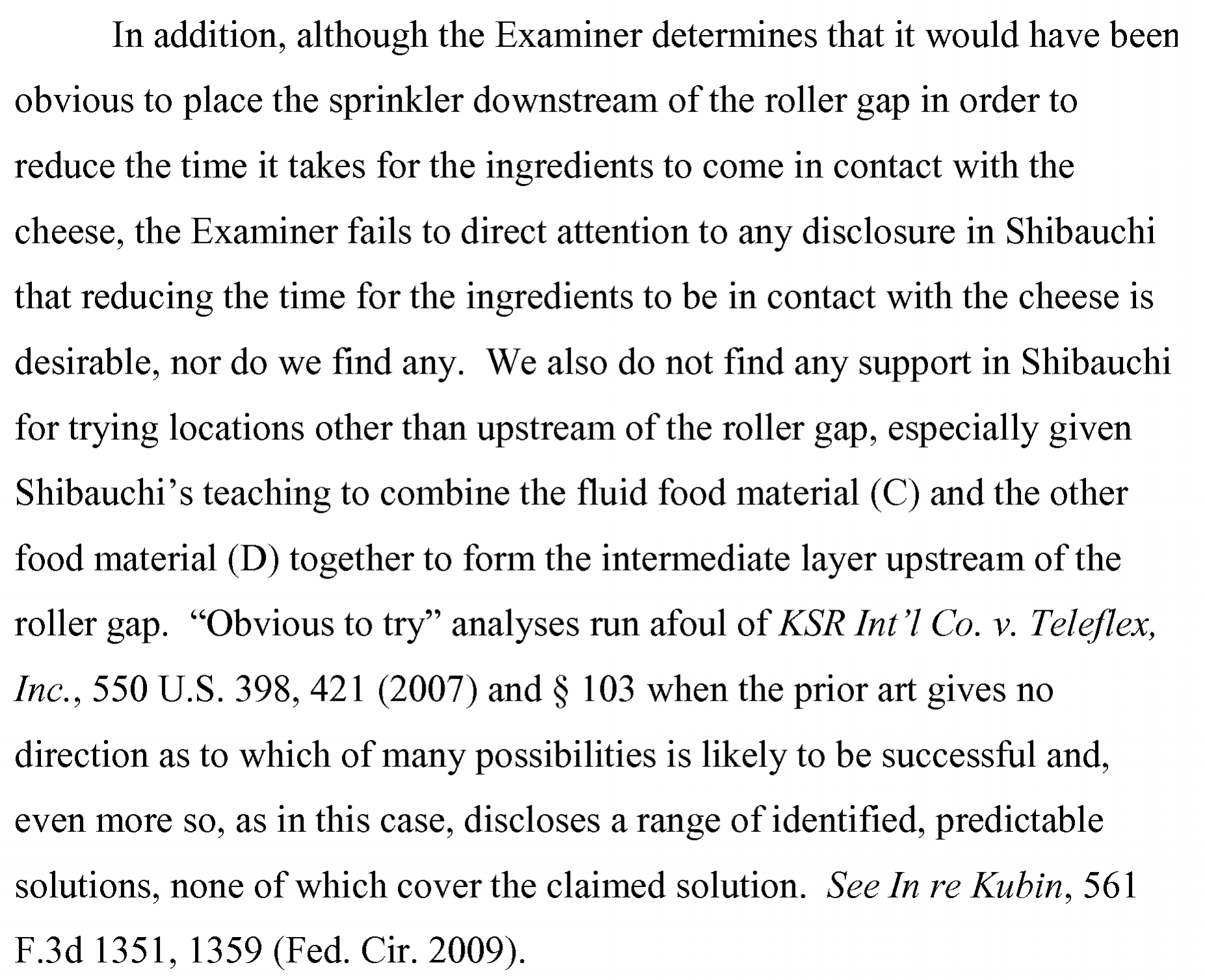The interplay between motivation to modify a reference and the obvious to try rationale is a common issue in patent prosecution. Examiners often reach for anything in a cited reference to supply motivation and then fill any remaining gaps with the idea that it is obvious to try various options. While typically it is clear that these rejections are really based on hindsight, it can be very difficult to overcome them, even on appeal, as the tests are amorphous and flexible.
An example helps illustrate the issue. Consider the invention in 13/818,951 directed to a method for introducing an ingredient into the surface of cheese present as a flowable mass. The invention involved a particular location for sprinkling in the ingredient, namely downstream from the first roller gap while in contact with a cooling belt. The cited art added the ingredient before the first roller. The examiner reasoned it was obvious to try downstream because there are only two options – upstream or downstream. Further, the Examiner reasoned that it would be obvious to try downstream because doing so would reduce the amount of time needed for the ingredient to contact the cheese, thus speeding up the sprinkling.
This example illustrates a common tactic examiners utilize to buttress rejections that involve dividing the universe into the “claimed way” and the “disclosed way” of the prior art. Such a tactic makes it so there are only two options from which to select. Thus, as the logic goes, according to the Supreme Court in KSR, there are only a limited number of choices and so it would be obvious to try the “claimed way.”
There is no easy way to shoot down such reasoning as it looks perfectly reasonable on the surface. To fight these types of rejections requires digging into the facts of the case and the details of the cited art. An initial approach is to illustrate why the universe is not so easily divided into two neat categories. Often, it is only because one sees the “claimed way” that is it possible to divide the universe in the first place. In the example above, the cited art taught specific advantages of sprinkling the ingredient upstream of the first roller, including that doing so enabled the ability to introduce a wide range of the ingredient as an intermediate layer. The reference further already provided a range over which to do the sprikling – anywhere from an upstream nozzle to upstream of the first roller. Thus, there were many places one might try for the sprinkling, and all of them were upstream of the first roller. In this way, the options were not upstream or downstream as the examiner would like it to be, but anywhere upstream of the first roller (and downstream of the nozzle). This also points to yet other possible locations, such as upstream of the nozzle. Given this, there were actually many options for where to introduce the ingredient, and the reference taught a specific reason for the range given.
On appeal, the PTAB confirmed the impropriety of the rejection for precisely the above reasons. The PTAB first addressed the differences from the art and the possible locations for sprinkling the ingredient:

Next, the PTAB then discussed the issue of motivation and whether the claimed location was obvious to try:

So, the next time you have an examiner relying on rejections that use the inventor’s teaching in order to divide the available options into over-simplified categories in order to make them seem limited, remember this cheese processing case and the best place to sprinkle ingredients into the cheese mass.

Leave a comment